With the onset of COVID-19, Indian cities have been working towards finding a solution for transporting citizens. Worries about maintaining social distancing has led more people to take up cycling and walking as their preferred modes of transport.
Interest in cycling has picked up sharply since the COVID-19 lockdowns, with sales of cycles having risen across the country. For this trend to continue beyond the pandemic, the government needs to invest in infrastructure that favours walkers and cyclists in city spaces which are typically jam-packed with motor vehicles.
Bengaluru, which has over 1.39 lakh cyclists, has a thriving cycling culture that originated even before COVID-19 thanks to its good weather, an involved community, and most importantly, the collaborative spirit of citizens and organisations. However, cycling only amounts to roughly 2.2% of trips in the city, compared to two-wheelers (nearly 30%).

Say hello to pop-up lanes
The Directorate of Urban Land Transport (DULT) has pioneered cycling initiatives in Bengaluru over the last few years in collaboration with community groups, other government agencies, experts, and other stakeholders on the ground. There have also been non-government initiatives like the ‘Namma Cycle’ bicycle sharing programme.
DULT’s Cycle Day initiative brought neighborhoods together to reclaim the streets through cycling and recreational activities. This was a great step towards building awareness on cycling culture and safety, and prompted many to take up cycling.
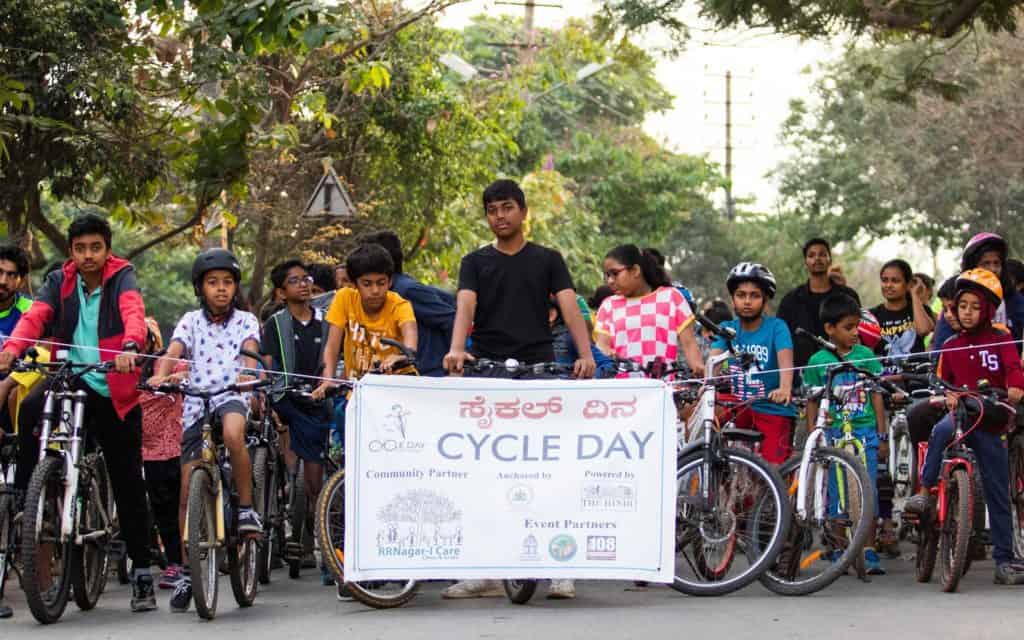
As more cyclists took to the streets during the COVID-19 lockdown, this presented an opportunity to reimagine the city’s congested streets through pop-up cycle lanes.
Pop-up cycle lanes are dedicated cycle lanes that, by design, are quick, need-based and cost-effective. They have emerged in cities such as Barcelona and London as a useful, cost-efficient solution to incentivise more people to use cycles.
Initiated by DULT, the pop-up cycle lane project is aimed at creating safer routes for cyclists. This involves:
- creating dedicated cycle lanes
- reconfiguring junctions for safe cycling and pedestrian crossings
- using semi-permanent yet durable materials like thermostat paint and bollards along the cycle lane
- cleaning and re-surfacing the lanes with asphalt layers
- creating pocket spaces and bicycle parking zones as pause points, based on space and funding availability
Pilot pop-up cycle lane on Outer Ring Road
The pilot pop-up cycle lane will stretch for 34 km along the Outer Ring Road (ORR), one of Bengaluru’s most traffic-congested roads, between Silk Board Junction and Lowry Junction in KR Puram. The cycle lanes will be set up on ORR’s service roads.
ORR is currently used by over 1,000 cyclists as part of their daily commute to the numerous offices and tech parks along the road, and is a prime candidate for improving cycling infrastructure to reduce accidents. ORR is designed with three lanes in the centre (including one dedicated bus lane), flanked on either side by two-lane service lanes. Creating a cycle path in the service lane prevents conflicts with motorists in the main vehicular lanes, making cycling safe.
The project began this April, when field surveys were conducted by the DULT Commissioner V Manjula, the then-Commissioner of Police Bhaskar Rao, Bicycle Mayor Sathya Sankaran, WRI India staff Rajeev Malagi and Sudeept Maiti, along with other key stakeholders like BBMP and BMTC officials. WRI India, a research organisation which is currently working with DULT on various public transport and safe access projects, extended its support in scoping and developing the project.
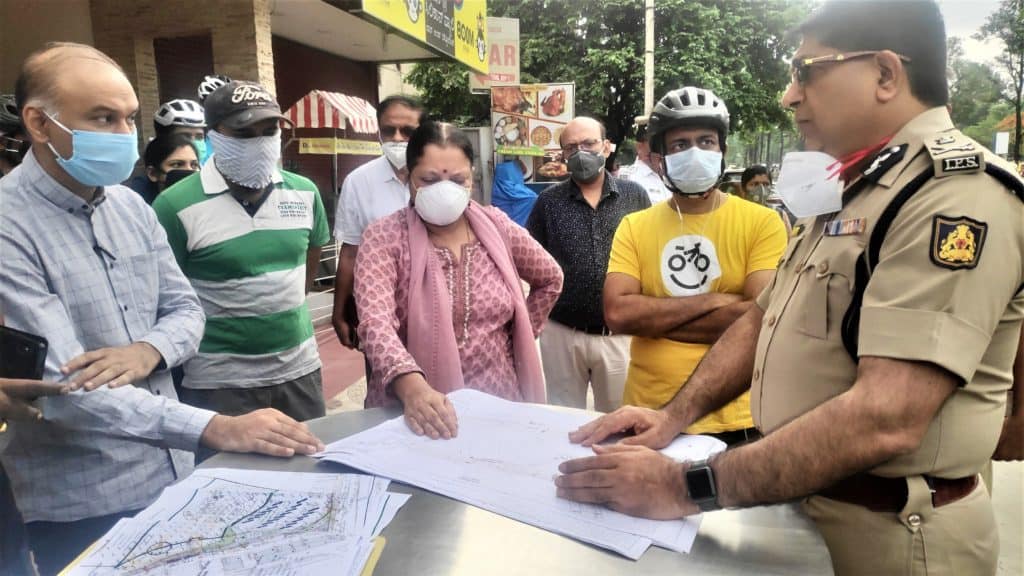
The entire stretch was inspected by WRI staff as well as the Bicycle Mayor and ambassadors on bicycles, to understand the issues that a commuter on the proposed cycling lane could face. The team analysed road surface conditions, assessed the stretch for safety issues and any potential conflict points with vehicles, as well as road visibility conditions and obstructions in the lane.
Based on the findings and analysis, the group charted out the cycle track design and alignment along the identified road stretches.

Another critical factor for cyclists is safe crossing at junctions, as these points are prone to high-level conflict with motor vehicles. WRI India has identified and developed 14 junctions along the planned stretch by reconfiguring the lane widths, adjusting vehicular movements, and creating crossings and refuge areas for cyclists and pedestrians. In the long term, signals will be placed at these junctions.
Project to be completed in coming months
The project has been officially submitted to the BBMP and the implementation is expected to be completed in the coming months. DULT has also formed a ‘Cycling Committee’ to bring together government agencies, Smart City officials, community representatives, the WRI team, and others who are working to improve cycling ecosystems and infrastructure in the city.
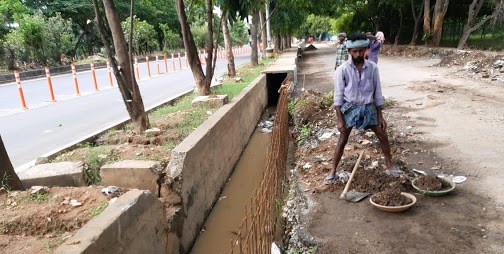
The project is set to serve as a pilot for the current ‘Cycles4Change’ challenge, an initiative of the Smart Cities Mission to support cities to quickly implement cycling-friendly initiatives in response to COVID-19.
Once completed, the pilot will be scaled up to create a ‘cycling district’ around ORR by interlinking key routes with important activity generators and neighbourhoods. This will not only create enhanced and safe cycling conditions, but will also help reduce motor vehicle use, especially for short-distance travel within a 5-km range.The pop-up cycle lane project will ultimately serve as a reference point and a standard for the city and the state to implement a cycle lane project quickly and with minimal resources.
It also creates an opportunity for new riders to try out cycling, whether over a long distance for exercise, or to the nearest shop to buy milk. While infrastructure on the ground continues to take shape, the aim is to get more people to ditch private vehicles and use cycles on the road.
As the pandemic brings about a larger sense of responsibility and awareness, you can help by participating in the various cycling initiatives in the city and voicing your needs for safe cycling conditions. One such initiative is the recently launched Sustainable Urban Mobility Accords (SuMA) project by DULT, assisted by the Bicycle Mayor and WRI India, which engages with communities to develop sustainable mobility solutions in their neighborhoods. Now is the time to claim our safe commute space and bring back the glory of cycling to Namma Bengaluru!
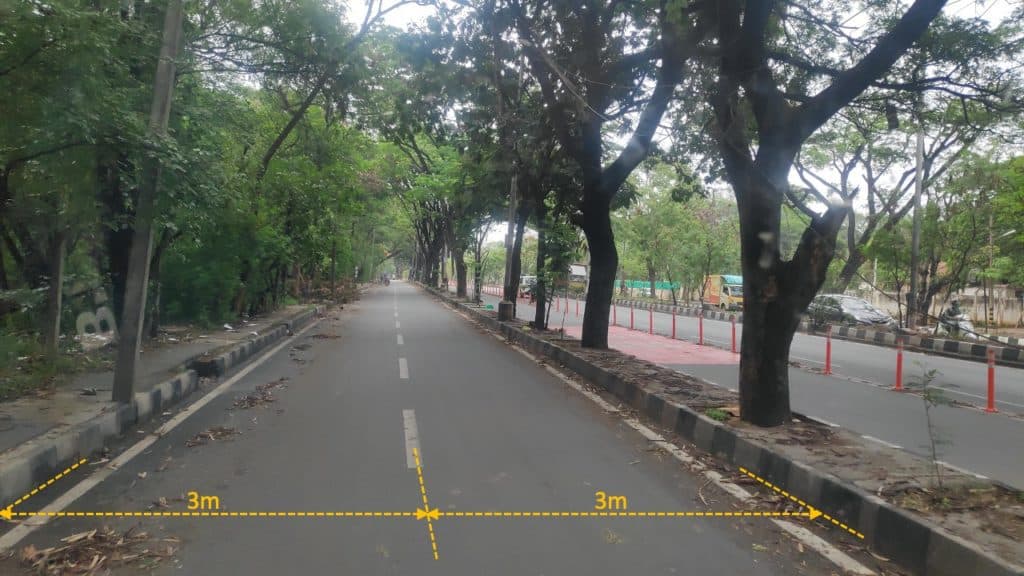
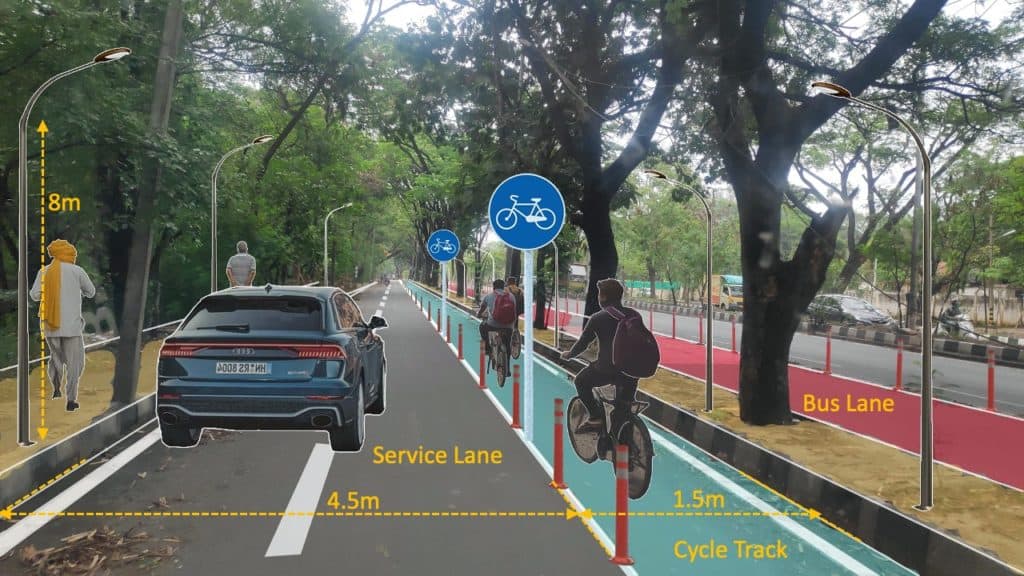
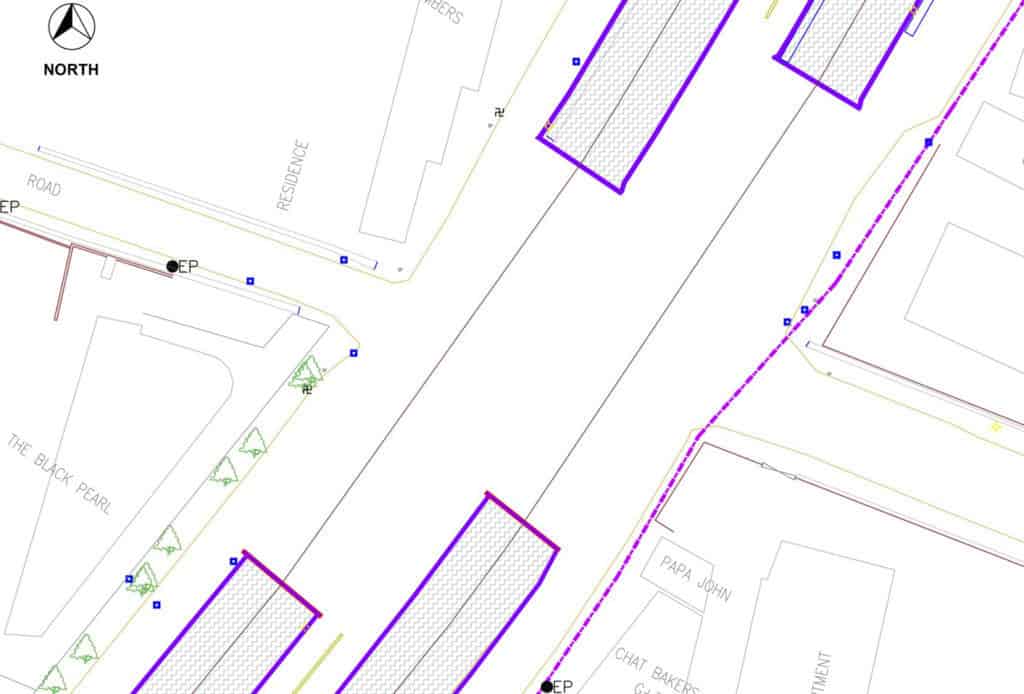
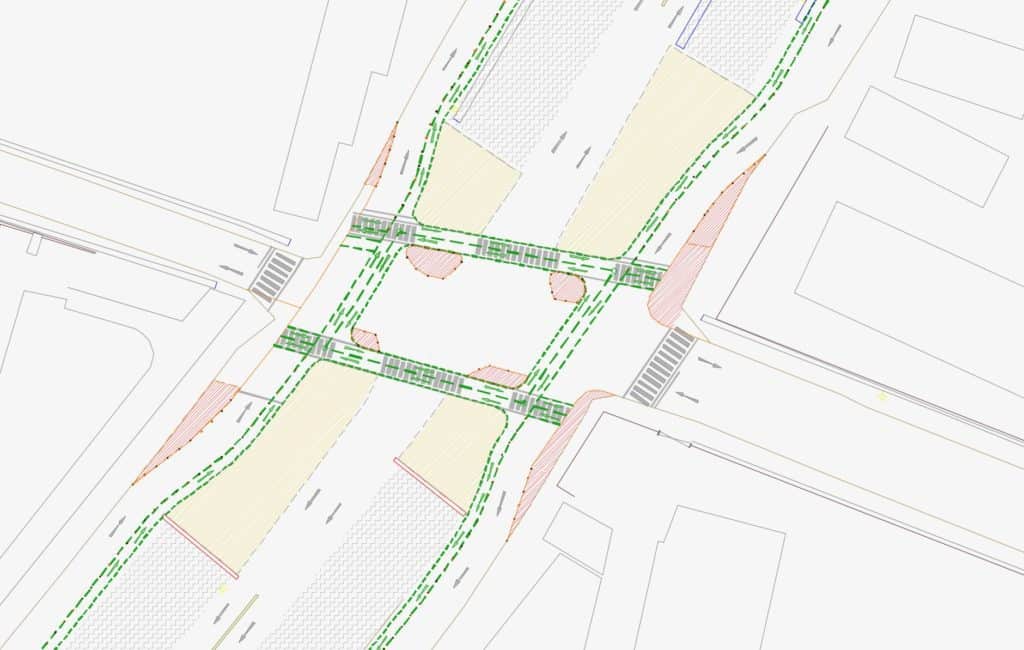
Which agency would ensure that the cycle lane is NOT used by scooter & motorbike users?
Well, I just took this lane yesterday and encountered at least a dozen motorbikes in this short stretch. Even worse, they insisted this is a bike+cycle lane. Only one of them moved to the main service lane. I was slower on this lane than the rest of my ride.
Like any other project, this is going to end up as a failure, unless there is strict penalties/enforcement.